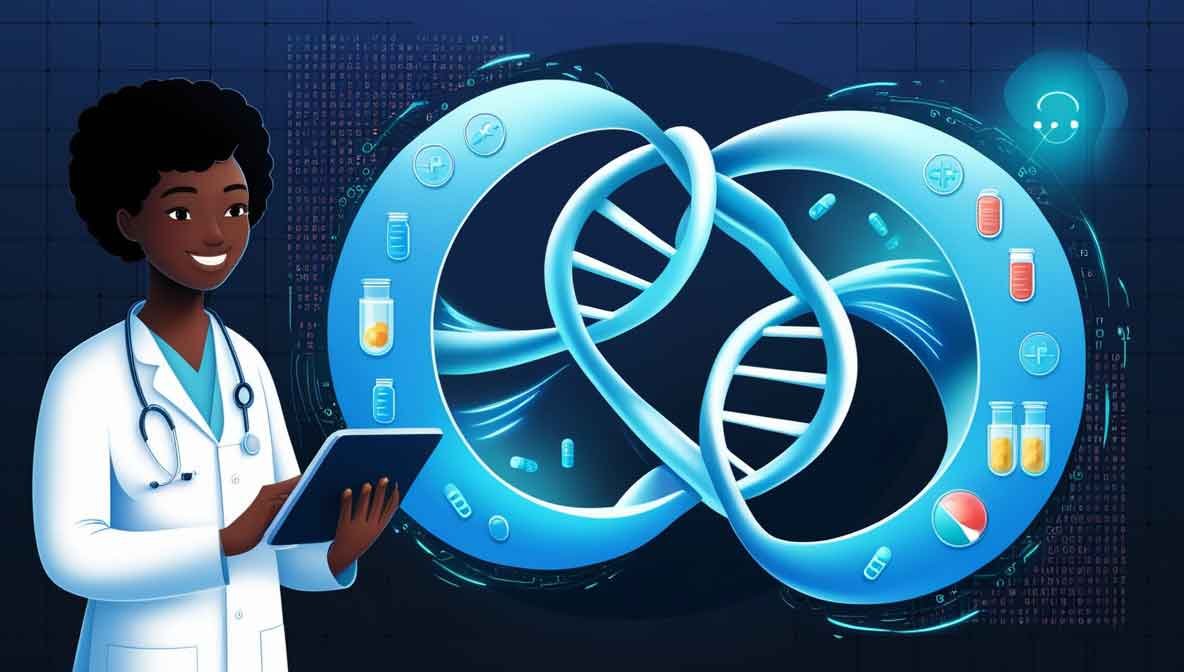A Revolutionizing Healthcare System? Imagine your physician can predict your health risks before symptoms appear, treatments are tailored to your genetic makeup, and drugs are developed with unprecedented speed and precision. This is not science fiction – it is the promise of personalized medicine, thanks to Big Data. Big Data is working to reshape the landscape of medicine, leading to an era of personalized care that was once thought impossible. From genetic sequences to real-time health metrics, this is a paradigm shift in how health is viewed.
Genomic Analysis At the heart of personalized medicine is genomic analysis. Big Data technology is exposing us to ;go further than ever before when it comes to single genomes for less money identify her more genetic markers for diseases predict individual response to treatment Dr. Jane Smith, a notable geneticist, explains, “With Big Data, we aren’t reading the genome, we are learning a particular language.
Our treatment plan is being adjusted to use in every male/female personal genome” .iterator6 Treatment Optimization Finally, Big Data is revolutionizing treatment plans for the following ;go patient record to ID the first treatment plan millions of people learning what works and what does not isle area outcome use your mathematical model to predict those outcomes in real-time Dr. Michael Lee, on oncology, comments, “Essentially, patient care is a GPS now. That is, we have the exact coordinate pairs where you must help all and there.
” Disease Prediction.Predictive analytics goes home; data are transforming the way both patients and doctors next eat A drug nasty or treat such a food Tide patient4 high risk while resisting the shit-load symptoms outbreaks level.
Allowing for less delay in preventing or counteracting sickness
Drug Development: Speeding Up The Process Of Discovery
Here is how the industry of pharmaceutical headquartered are using big data : 1 Mapping Genomes.
More efficient screening of potential drug candidates
Modeled Virtual Environment For Drug Interaction
Accelerate the detection of rare side effects before a drug goes to market
This could mean that drugs are discovered in only months and not years, increasing the speed at which potentially life-saving treatments can reach patients.

What This Means for Patient Monitoring Continuous Data
Fitness trackers andotherwearables, as well as Internet of Things (Iota) sensors are providing a wealthofhealth data per second:wearable devices.
Vital signs and symptoms are continuously monitored in real time.
Since then he has had surgery to remove part of his bowel and make a stoma, allowing Salas Rodriguez access from the outside — living with an ileostomy or to Stuart means ”I just have sex through my stomach” He now lives in fear that the cancer will come back but regular check-ups mean it would be detected early if they did.
Delivering Personalized Health Insights to Patients
“By monitoring 24/7, we’re not treating diseases but preserving health,” says digital health expert Sarah Johnson.
Personalized Medicine: A Deep Dive into the Big Data Technologies Powering it
Machine Learning Algorithms – The Brain of the Data
It is the engine powering insights from large datasets using machine learning.
Pattern recognition in medical data
Becoming better at predicting patient outcomes
Automated Image Captioning for Quick Diagnosis
Cloud Computing: Enabling Collaboration And Analysis
Types of cloud platforms
Handling large data sets
This opens up collaboration among researchers worldwide
Scalable Computation Power to Perform Complex Analysis
Wearable Tech: Health on Your Wrist
There are a few types of devices that fall into this category, but we usually refer to them as smart watches and fitness trackers.
Real time health data accumulated
Helping patients manage their health on the BACK of a shoe!
Realizing ongoing insight to doctors about patients
Chiropractic EHRs: the Digital Backbone
EHRs are crucial for:
Platform for patient information’s
Interoperability for health information sharing
Facilitating Population-Level Health Research
Symbiosis of Biology and Data Science “ Bioinformatics Tools
Researchers rely on specialized software:
Analyze intricate biological data
Visualize genomic information
Integrate multiple datasets for a unified view
Problems and Limitations: What Lies Ahead
Although Big Data ushering in an era where Personalized Medicine becomes a reality rather than science fiction is great news, the caveats to this are as follows:
Data Privacy Issues:
Securing health-sensitive information are critical.
Interoperability:
Guaranteeing that different systems will be able to communicate with each other.
Algorithmic Bias:
Tackling the implications of biased AI-driven healthcare model.
Costs:
How personalized medicine becomes available to everyone.
Regulatory Hurdles:
With the ever-changing landscape of trending regulations in healthcare.
Promise Ahead for Personalized Medicine
We are at the dawn of a new wave in healthcare, and as Big Data crosses with personalized medicine we will be changed on how we prevent disease, how it is diagnosed and treated. The possibilities are limitless, ranging from more personalized treatment plans to predictive healthcare.
Dr. Emily Chen, a leader in personalized medicine from the field) said it best, “We are not just changing medicine; we are recreating health itself.”
: Are you ready to jump on board this healthcare revolution? Find Out More on How You Can Help Automate the Overdue Transition to Personalized Medicine
Become Part of the Personalized Medicine Initiative







